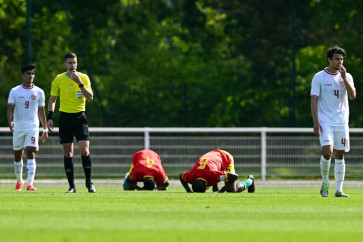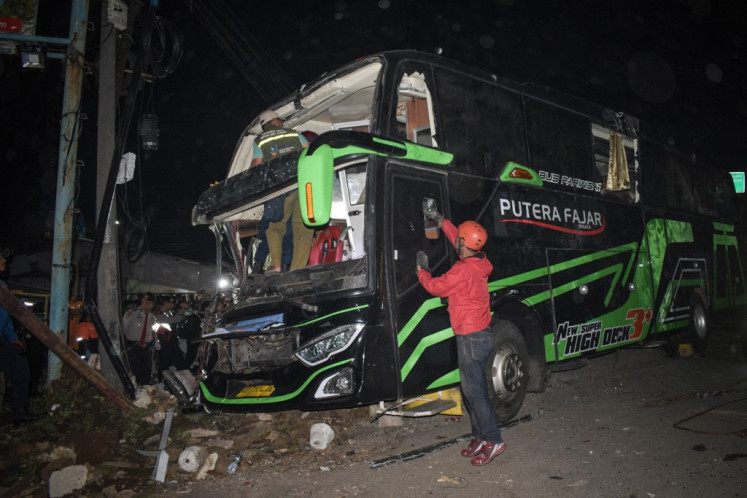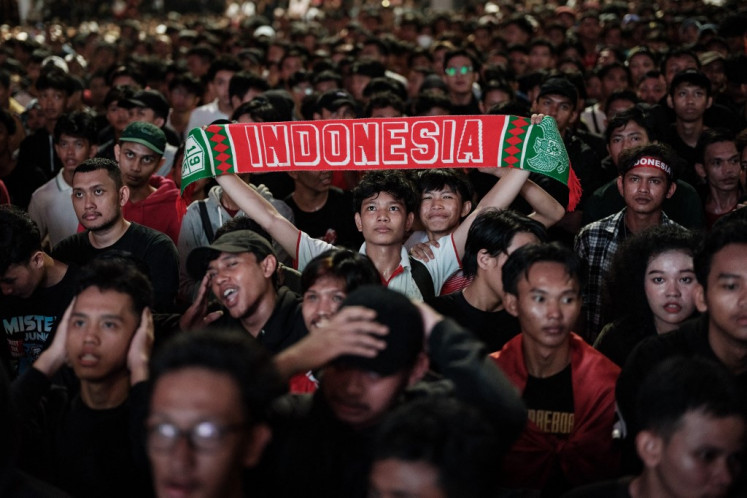Women ‘least prepared’ during disasters
Women continue to make up the majority of victims of natural disasters but not enough is being done to empower women to better protect themselves when a crisis strikes
Change Size

W
omen continue to make up the majority of victims of natural disasters but not enough is being done to empower women to better protect themselves when a crisis strikes.
Women, especially those who live in disaster-prone areas, may suffer disproportionately due to a profound ignorance of women’s needs in disaster preparedness and mitigation, activists say.
A broad review of disasters that have recently struck Indonesia shows that the calamities often impacted much more directly on women compared to men.
Edi Hayat, Women Empowerment Officer of Oxfam’s Building Resilience Program, said that men and women tended to react differently during crises, including natural disasters.
“Many women are killed during disasters as they try to save not only themselves but also their children. Women and children suffer most during disasters due to long-standing unequal family responsibility-sharing between men and women. This is why the number of women killed during natural disasters is usually much higher than men,” Edi told The Jakarta Post on the sidelines of a discussion on building disaster resilience held by Oxfam.
Unfortunately, preparedness and mitigation efforts developed by both central and local governments have systematically ignored women’s needs in initiatives to heighten resilience during disasters.
Edi said mainstreaming a gender perspective into disaster-risk reduction policies was critical in strengthening women’s capacity to deal with crisis situations.
“Frankly speaking, even at the national level, we haven’t seen a concerted effort to integrate gender perspective in disaster-risk reduction policies, whereas it is very important to reduce women’s vulnerability during crises,” he said.
In 2007, Indonesia ranked fourth worldwide for the number of disasters while it ranked sixth in the number of disaster victims. Two tsunamis, including the catastrophic wave surge that hit Aceh in December 2004, for example, killed 166,510 people and left 532,898 homeless.
Mainstreaming gender perspectives into disaster-risk reduction policies is one of the critical issues being discussed in a two-day workshop of “National women’s leadership in disaster-risk reduction” which is taking place on Nov. 22-23 in Bogor, West Java.
The workshop is part of Oxfam’s project of building resilience in eastern Indonesia which started in June 2009. The project funded by the Australian government through the Australia-Indonesia Partnership aims to strengthen the capacities of government, civil society and communities in 16 districts nationwide in reducing disaster risks.
Under this project, people in disaster-prone areas such as North Sumatra, Central Sulawesi, East Nusa Tenggara (NTT), West Nusa Tenggara (NTB), Papua and West Papua, develop capacity-empowerment in disaster-risk reduction, making them much more resilient in coping with the impact of such hazards.
During the workshop, Oxfam’s local partners share experiences and lessons learned in mainstreaming gender perspectives into disaster-risk reduction policies in their districts.
Lukman Hakim, Adaptation Risk Reduction/Climate Change Officer for Oxfam’s Building Resilience Program, said changes in women’s disaster vulnerability would only emerge if they acquired greater capacity to deal with crisis situations.
Citing examples, he said that local communities living in disaster-prone areas used to think that natural disasters were part of a natural cycle.
“They even used to see it as a warning coming directly from God whereas now they can do many things to reduce their exposure to the impact of disasters, or even prevent them,” said Lukman.
During the program, community action-plans have been delivered in 16 districts, including the establishment of disaster-preparedness standard-operating-procedures for 67 school and village disaster-preparedness teams in 115 villages which consist of 2,371 men and 892 women or 30 percent of total team members.
To reduce vulnerability, for example, village women who joined with the village disaster-preparedness teams learned practical steps in emergency responses, such as how to deliver first-aid assistance.
“Instead of just waiting for help, women living in several disaster-prone areas can now deliver simple measures to deal with broken bones, or bleeding. This may reduce their vulnerability during disasters,” said Lukman.
In Central Manggarai, East Nusa Tenggara, village women are involved in a variety of economic-empowerment activities, such as planting coffee and breeding livestock, provided by the project. Such empowerment aims to reduce economic vulnerability during disasters in which women often suffer the most.
“Economic vulnerability is actually the biggest challenge faced by women in disaster-prone areas. In a long dry spell, they can do nothing since they are too poor. By being economically empowered, they have more capacity to deal with disasters when they strike,” he said.









